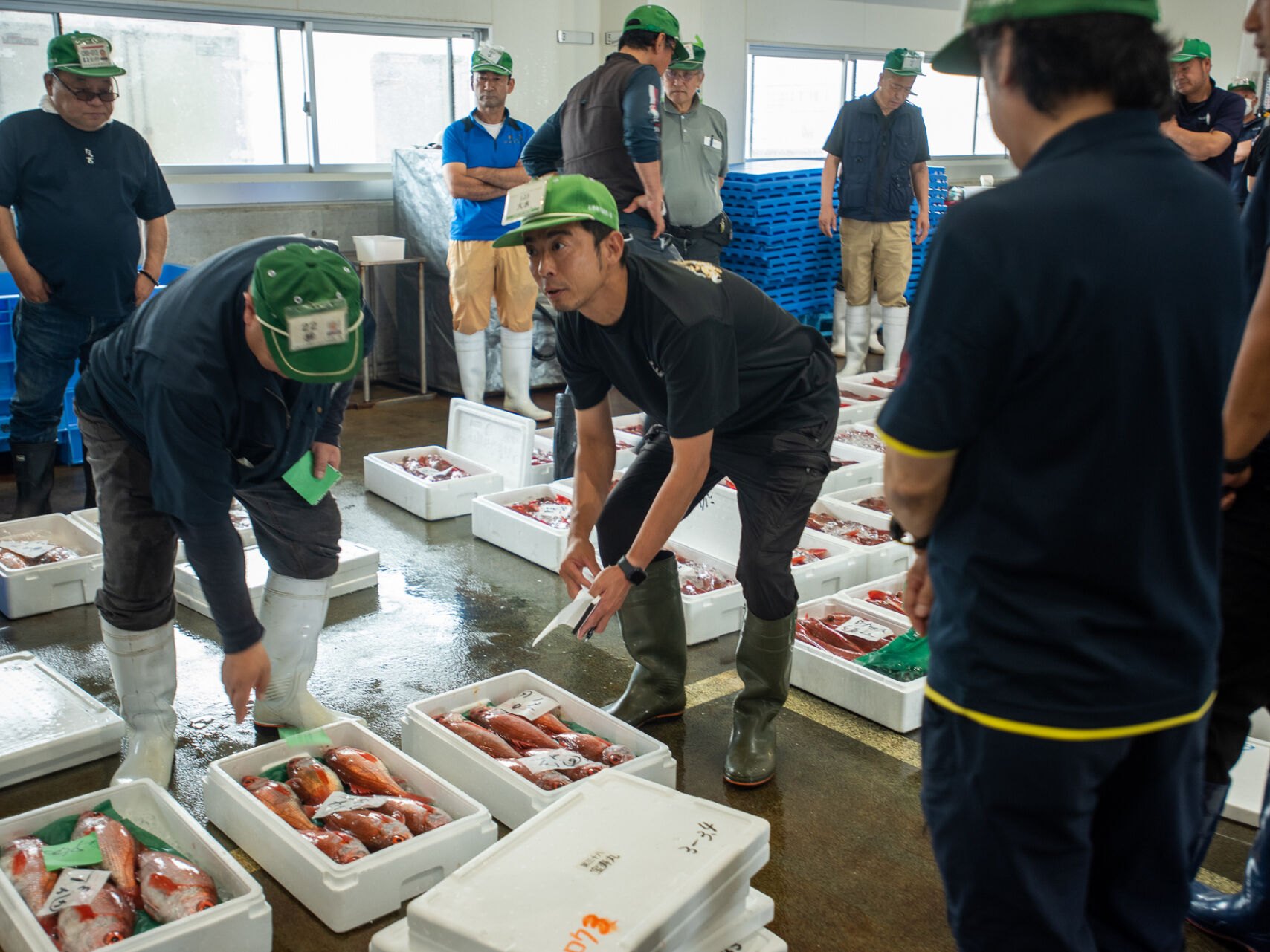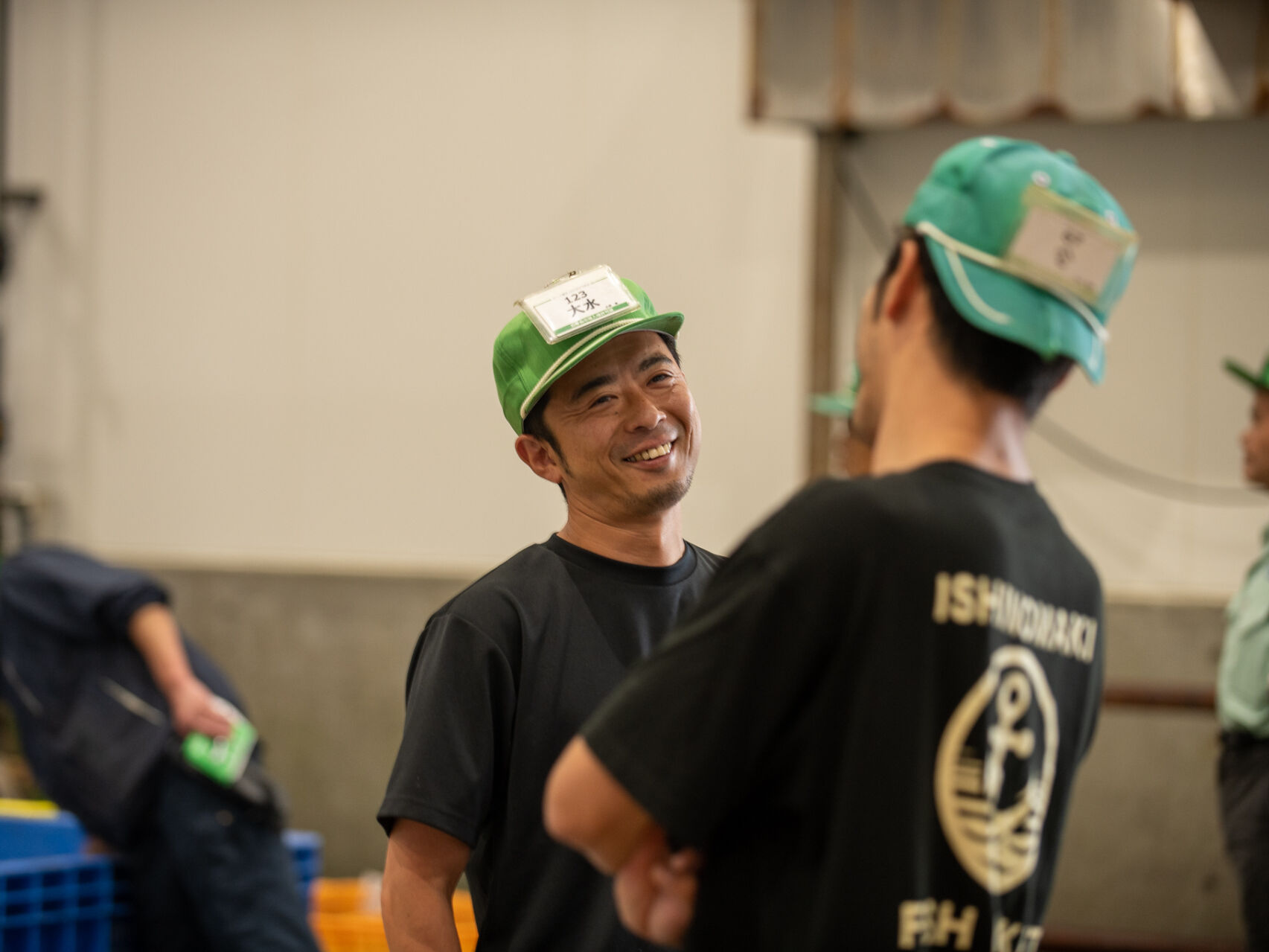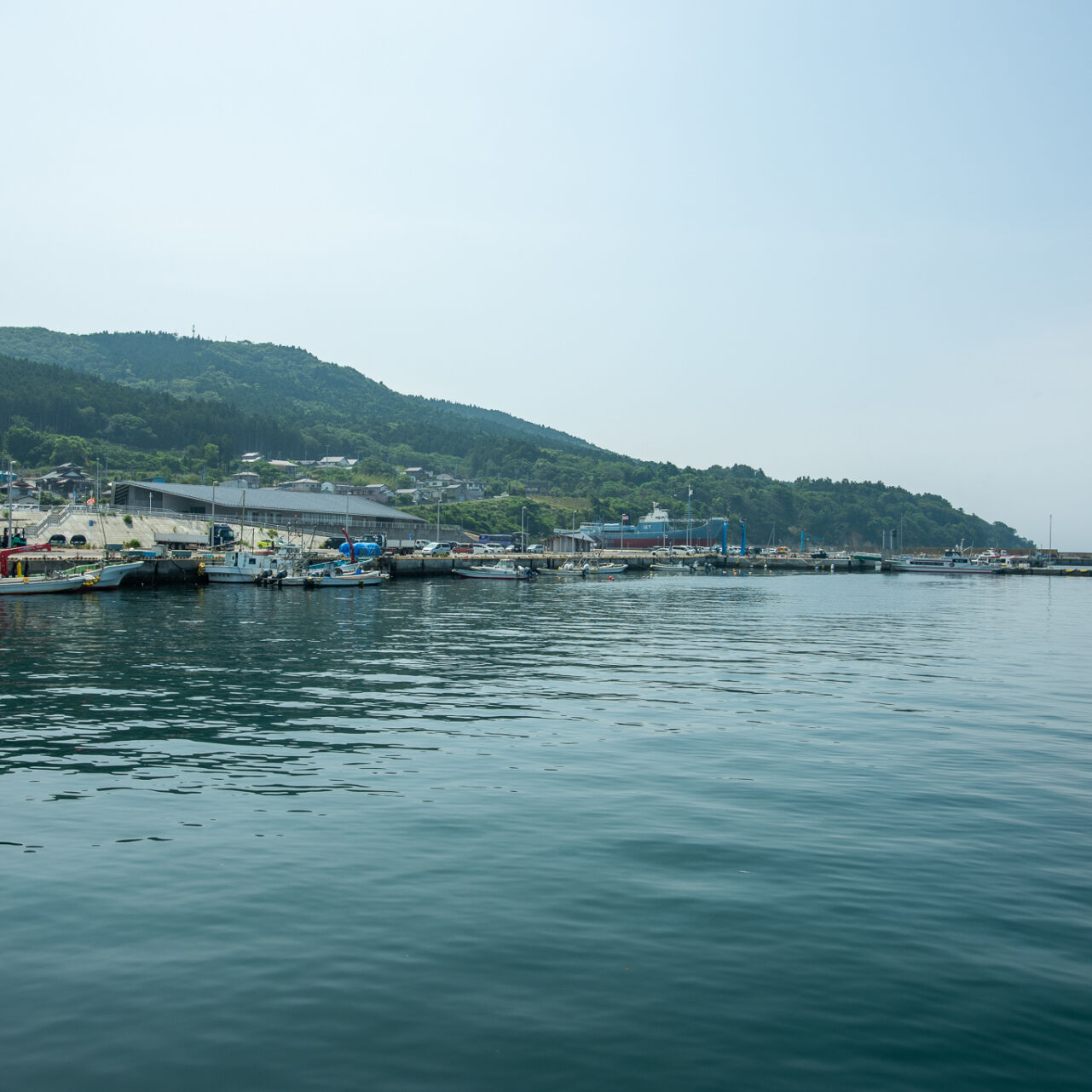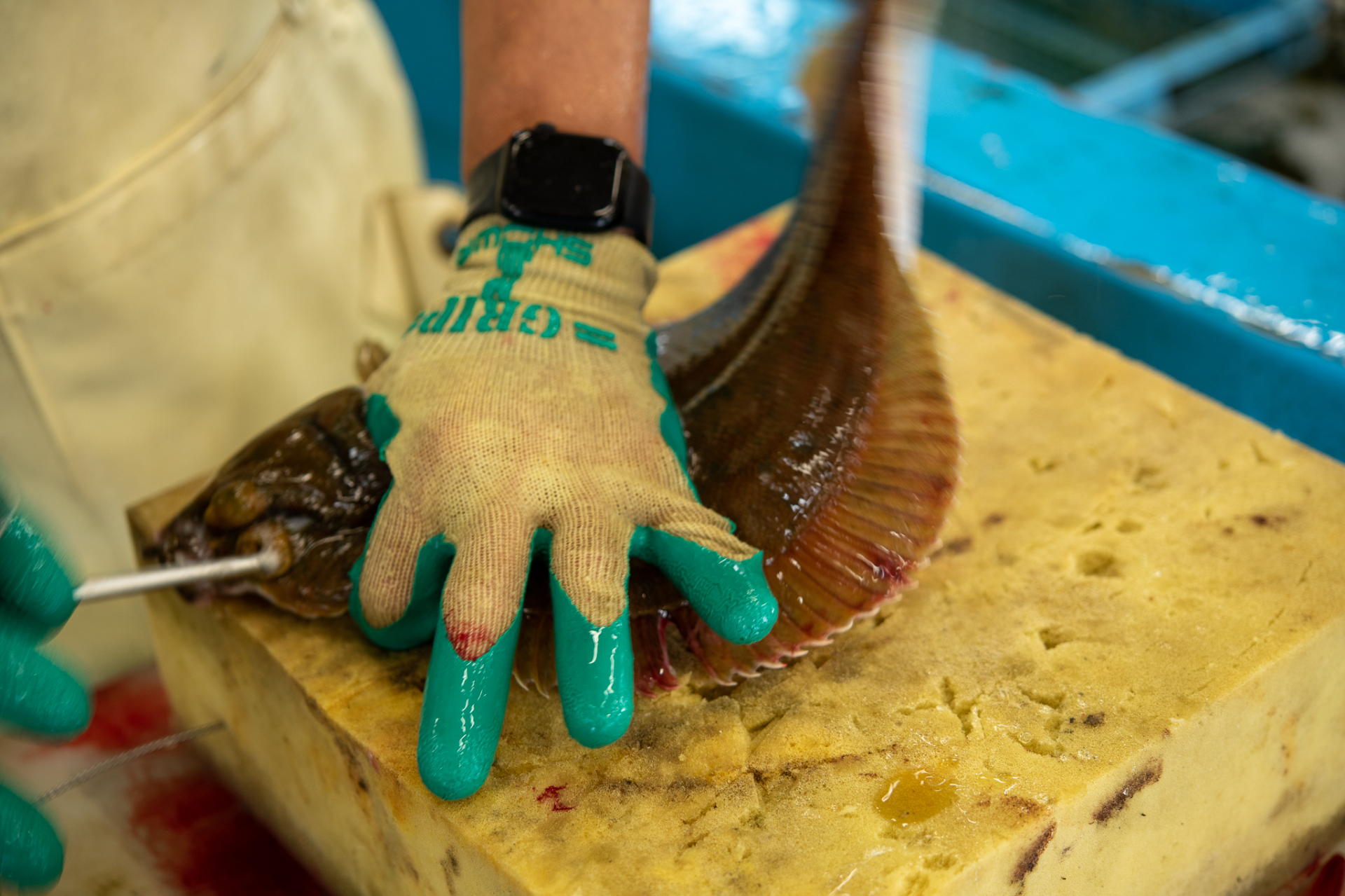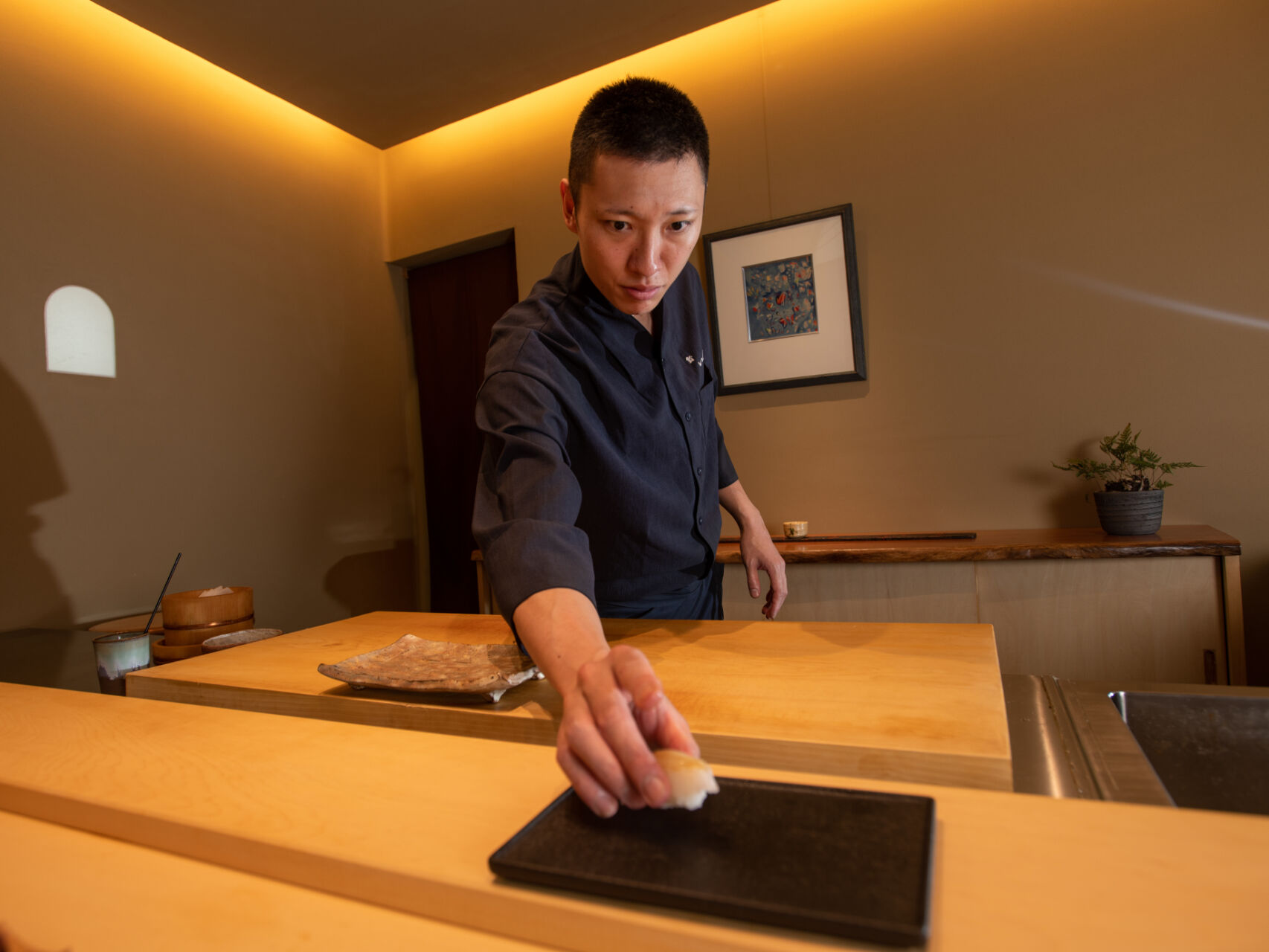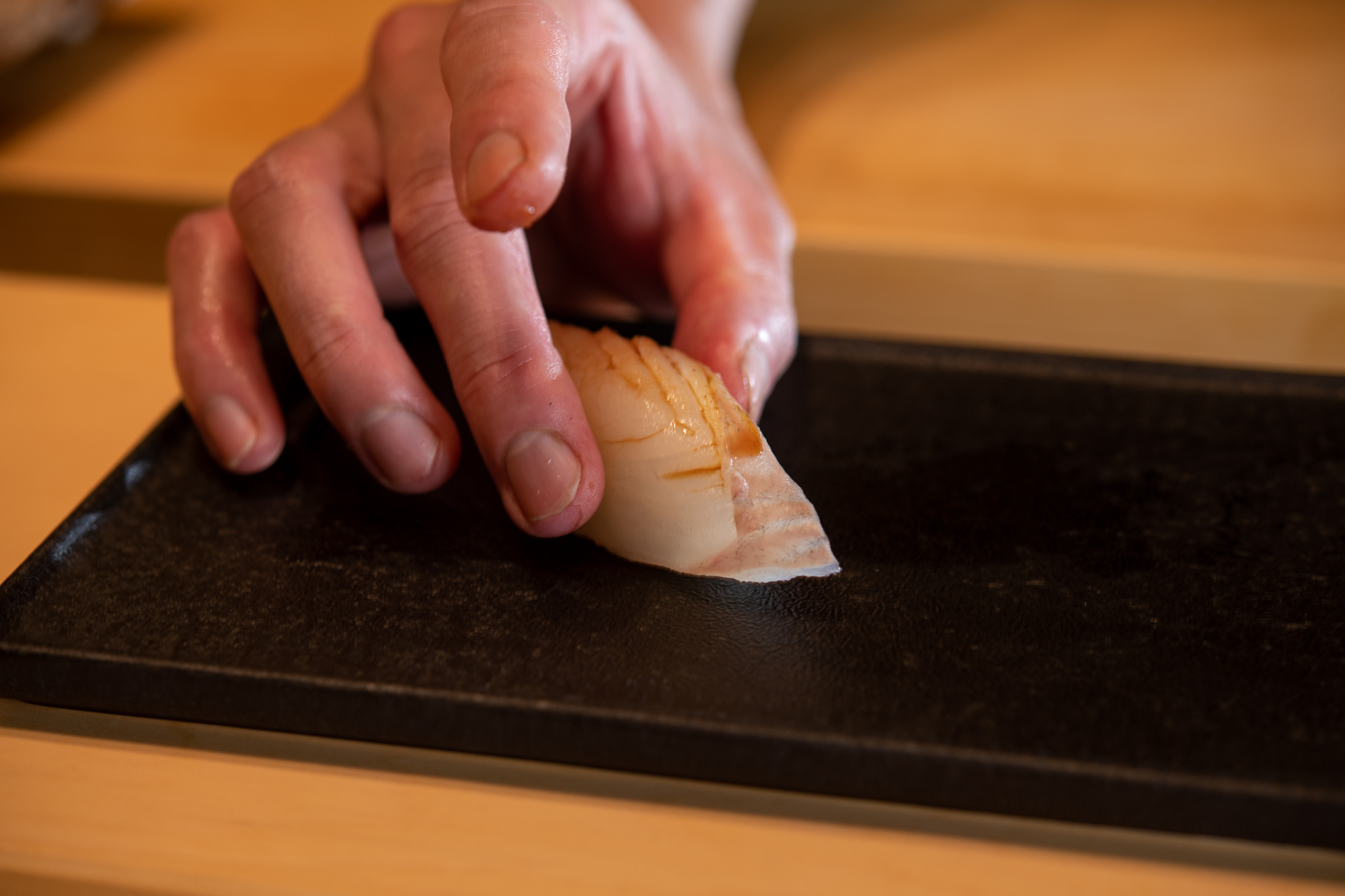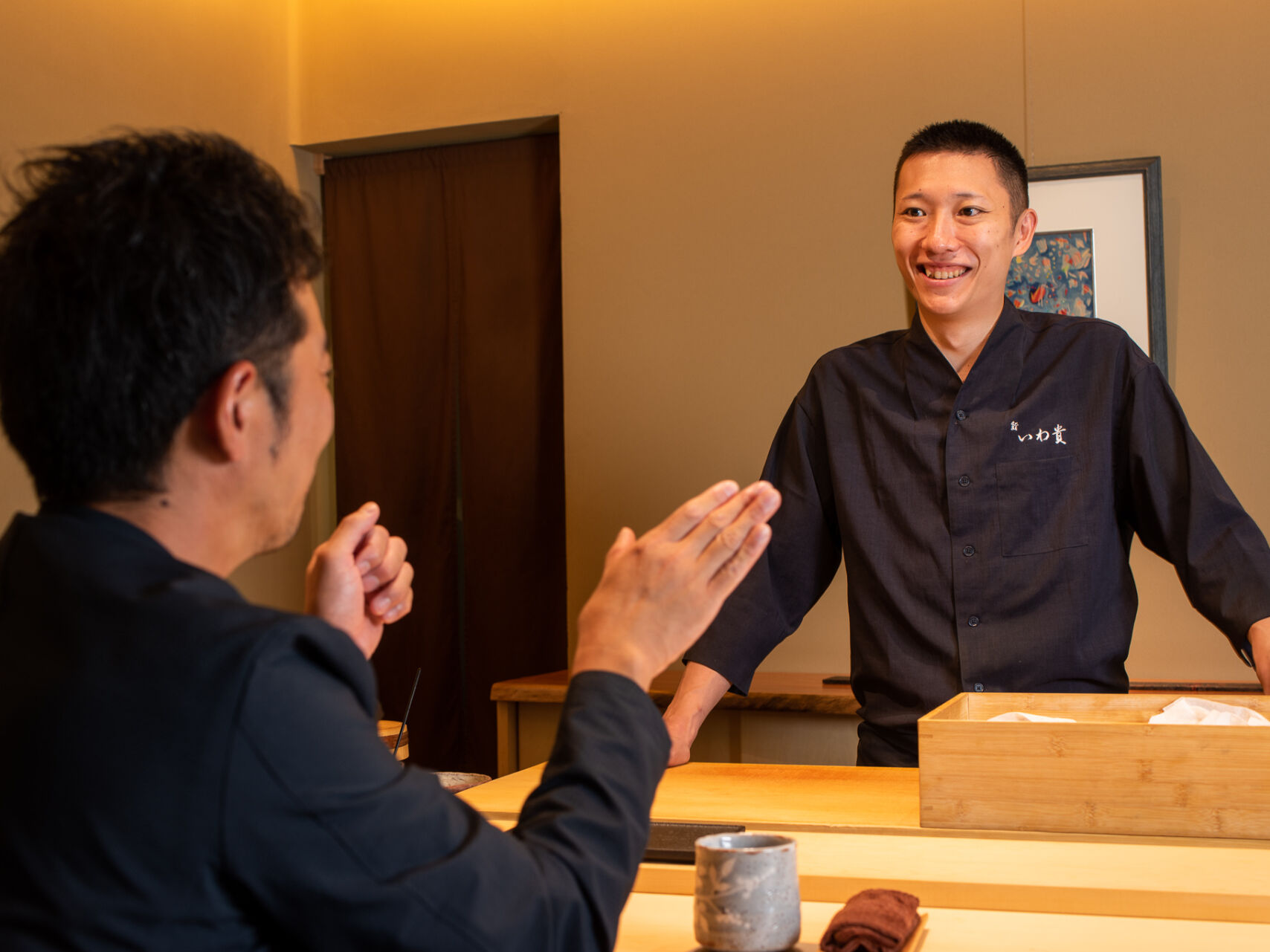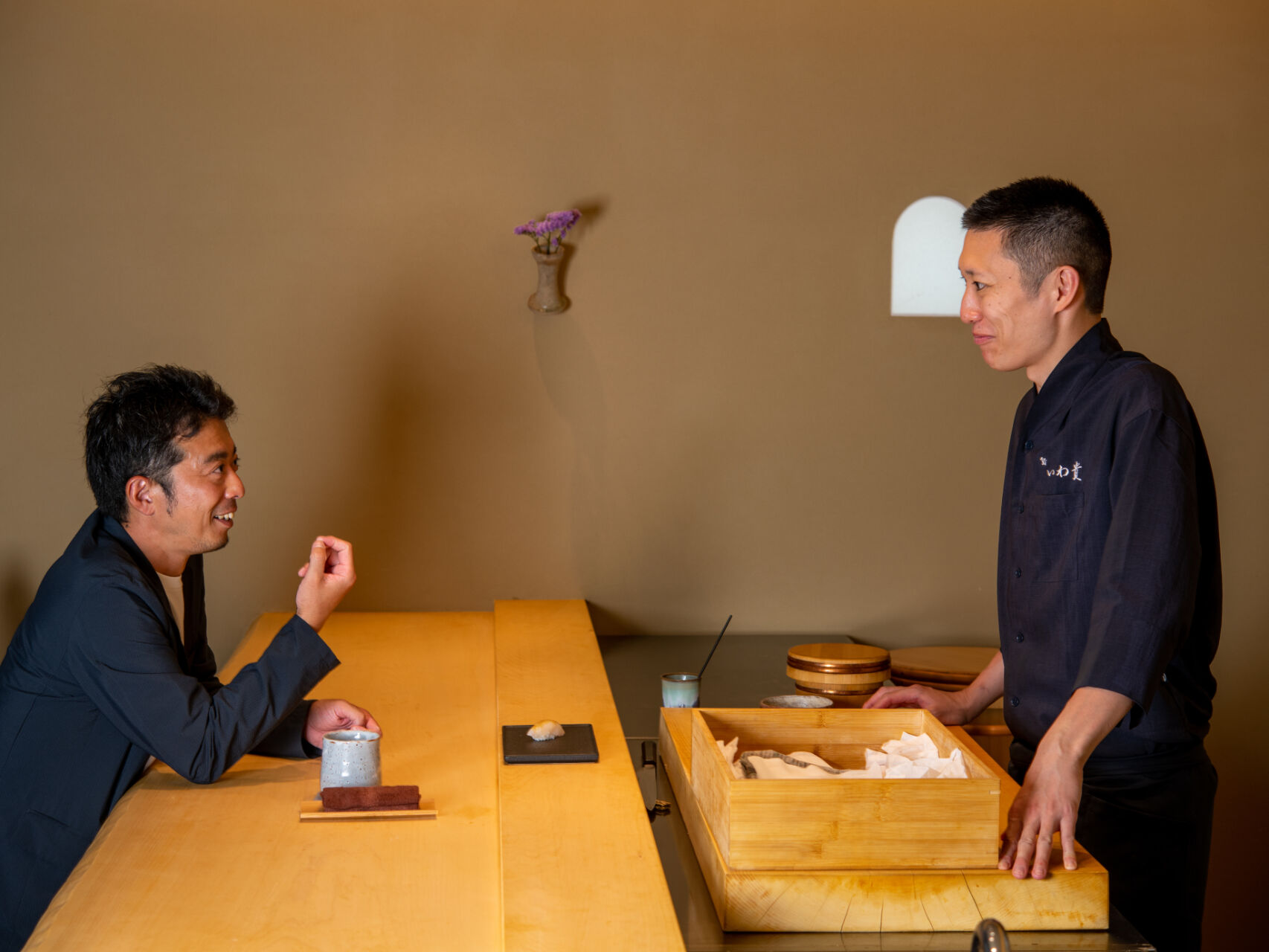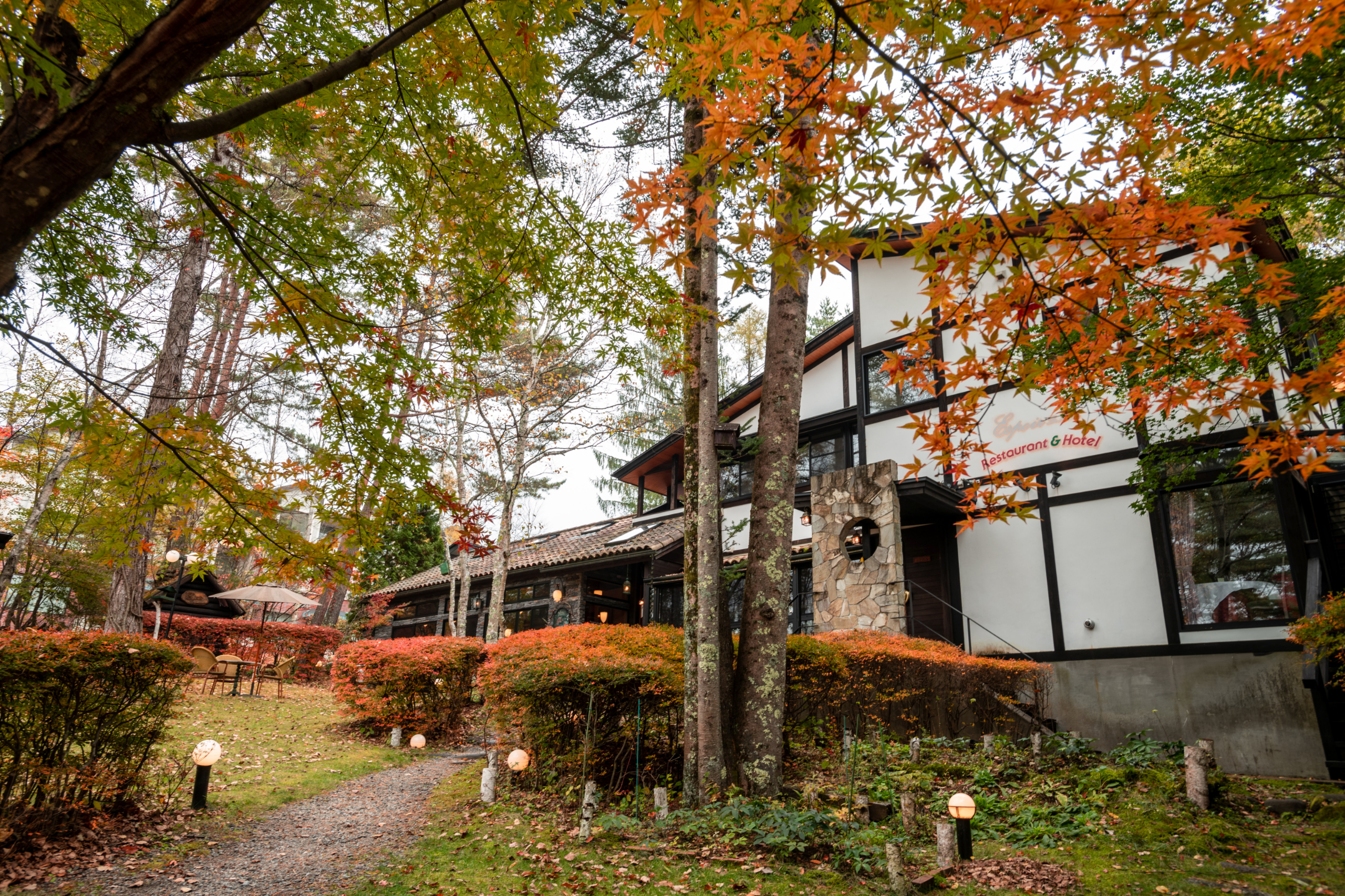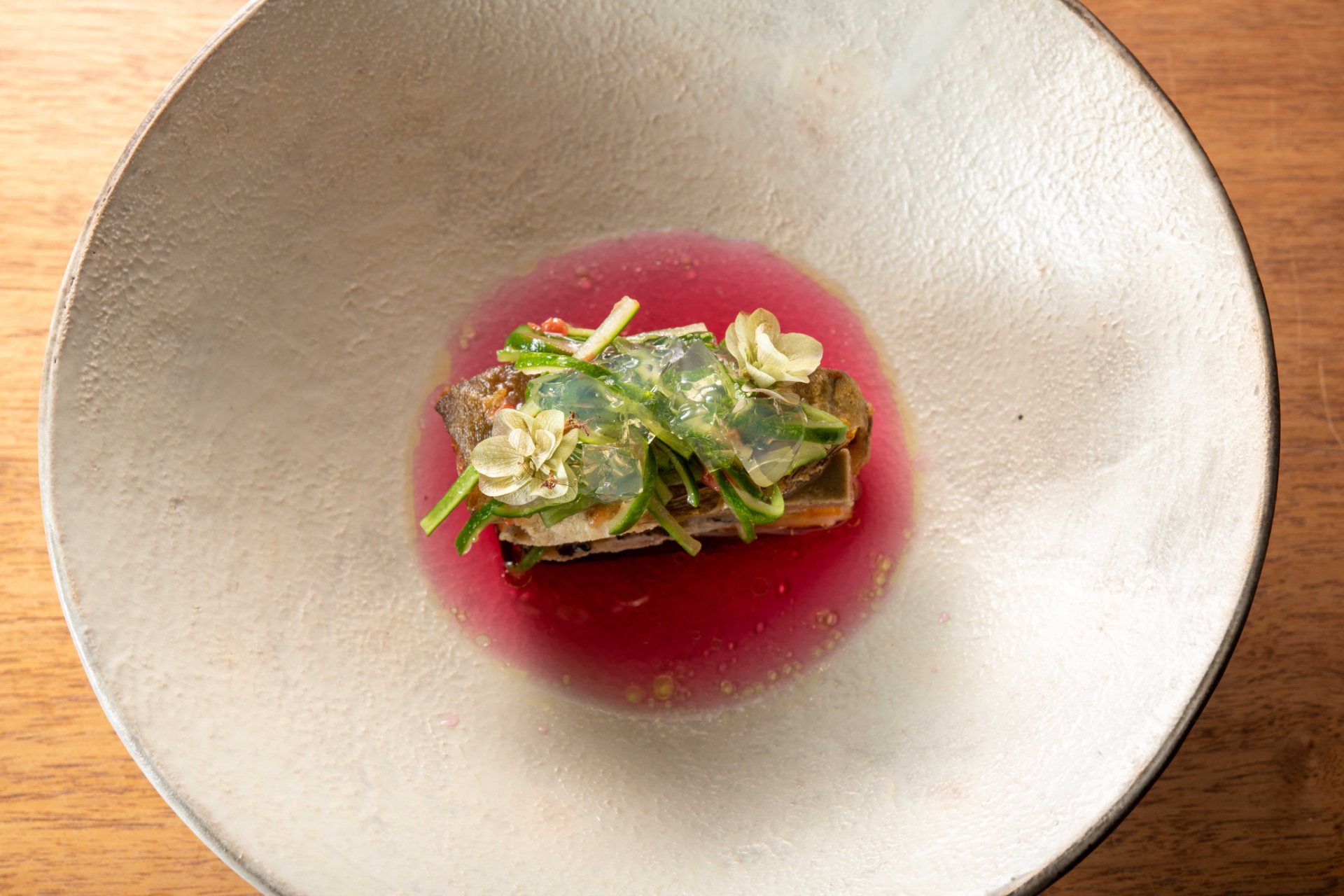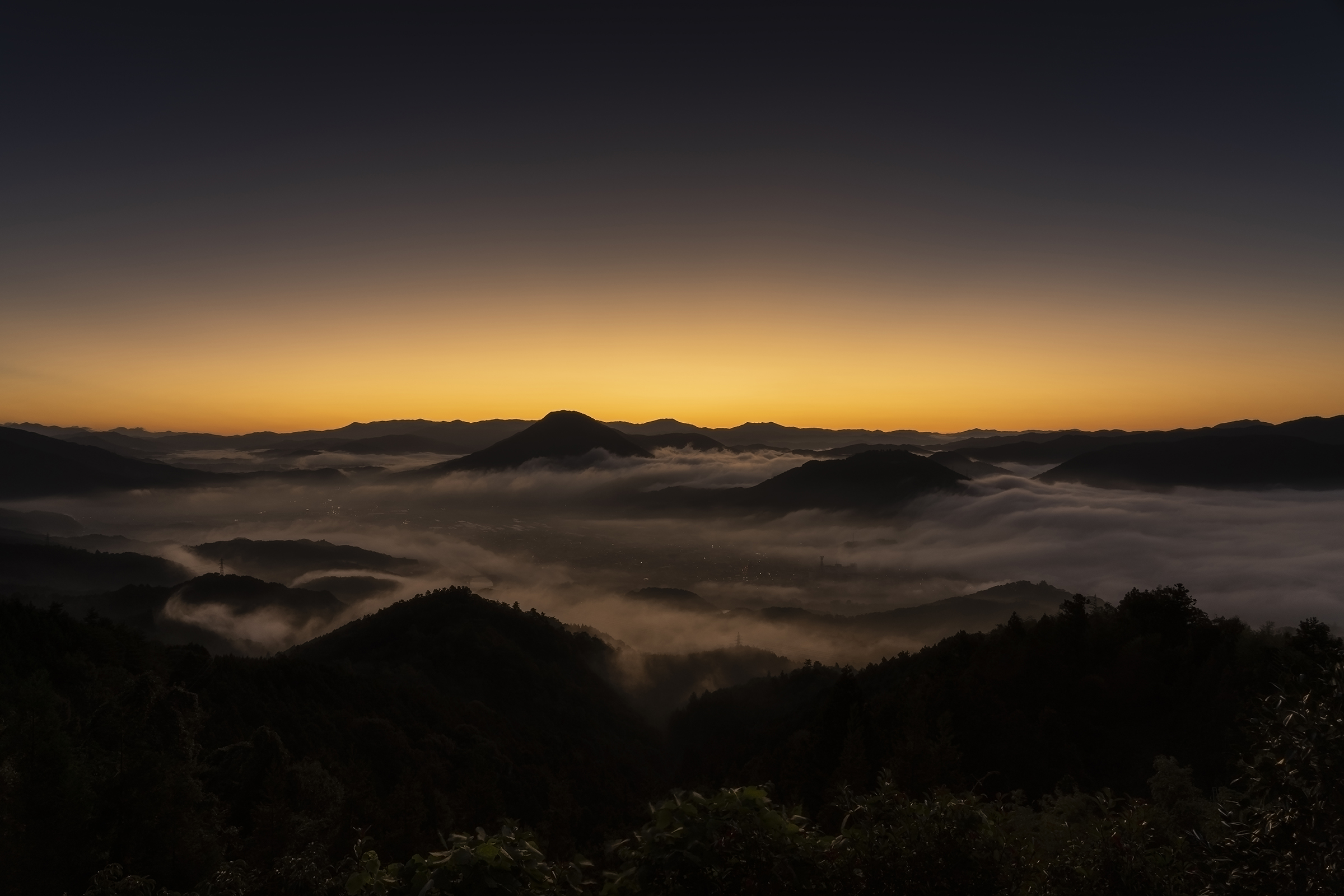There is a group of passionate individuals determined to make the phrase “Miyagi Means Sushi” a reality. Drawing inspiration from the legacy of the Sendai Domain, they are championing a style they proudly call “Date-mae” sushi—a bold regional take on the renowned Edo-mae style—Tokyo-born sushi developed along the bayfront (mae, “in front of Edo”), known for techniques that enhance natural flavor.
Let us begin by introducing the man behind this movement.
Kei Omori, born in 1977, is the president of Daisui Co., Ltd., a fresh fish wholesaler based in Ishinomaki City. In the seafood world, he is revered as a maestro of modern fish logistics, known for “Omori-style distribution,” which involves a technique called shinkeijime—a precise, humane method of fish preparation. This process involves swiftly inserting a wire into the fish’s spinal cord immediately after harvest, delaying rigor mortis and preserving peak umami and texture for longer periods. The result is seafood of astonishing freshness and clarity, worthy of the finest tables in Japan.
Later, he heads to another port—a more modest one. This is Ayukawa Fishing Port, located in the Ayukawahama area of Ishinomaki.
“This market was on the brink of closure nearly ten years ago due to a lack of buyers,” Omori recalls. “I pleaded with the head of the fishing cooperative at the time: ‘Even if there’s just one fish, I’ll come pick it up—just please don’t shut it down.’ Thanks to that conversation, it continues to this day. Today, I buy every single fish landed here.”
What draws him to this particular port?
“Ayukawa is blessed with marbled and spotted halibut of extraordinary quality, caught off the rugged shores of the Oshika Peninsula. Unlike large markets that store live fish in sterilized seawater, here we use natural seawater drawn from wells near the coast—creating a gentle, stress-free environment for the catch. It’s ecologically responsible, and close to nature in every sense.”
That morning, his father—Haruo Omori, born in 1948 and the company’s founder—also made an appearance. Still active and occasionally driving delivery trucks, he remains hands-on.
Though today he is renowned across Japan’s seafood circles, Omori’s path has been anything but easy. After graduating high school, he spent three years working at a wholesale market in Sendai but eventually resigned. He did not join his father’s company until nearly the age of thirty.
“At that time, I treated the job with the mindset of a typical office worker—punching in and out at set times,” he reflects.
Then came March 11, 2011. The day that would change everything.
“When the Great East Japan Earthquake struck, both our market and our company were swept away by the tsunami. I found myself in an evacuation shelter. Many fishermen who had lost their boats had also taken refuge there. Over shared drinks, we spoke late into the night—about what we had lost, and what might come next. In those raw, uncertain hours, I was struck anew by the profound importance of food, not just as sustenance, but as the very fabric of community.
That experience made me realize—I wanted to protect the lives of local fishermen and the future of my own company by raising the value of fish. I chose to face seafood with genuine seriousness. I began studying how to handle and prepare fish—including shinkeijime, the nerve-stunning technique—and to better understand the intricacies of distribution. That was my true restart.”
As his business flourished, one concern remained: even the finest fish he carefully selected and prepared often ended up being shipped to Toyosu Market in Tokyo, the world’s largest and most renowned seafood market.
“Rather than fetch high prices in Toyosu, I believe it’s far more valuable to have that fish prepared and served locally—so that visitors come to Miyagi to eat it. But until recently, we lacked chefs with the skill and vision to make that happen.”
Then, word reached Omori that a young sushi chef—trained at the acclaimed “Mitani” restaurant in Yotsuya, Tokyo—had returned to Sendai and opened his own place.
Their fateful meeting occurred in February 2025. Omori boldly said, “Come visit me—I promise your sushi will taste even better.” Not long after, the young chef made the trip to Ishinomaki.
That chef is Takayuki Iwai, who opened Sushi Iwaki in Aoba Ward, Sendai City, in December 2024.
Born in 1992 in Sendai, Iwai comes from a family steeped in culinary tradition: his father, grandfather, uncle, and cousin are all sushi chefs. Even his cousin’s child is now training to become one, and his grandmother once ran a Japanese restaurant. From an early age, he was truly immersed in an environment shaped by sushi and traditional Japanese cuisine. By the time he was in kindergarten, he had already declared that he would one day become a sushi chef himself.
Mitani, the renowned sushi house in Yotsuya, is so sought-after that reservations are filled years in advance. How did Iwai secure a coveted apprenticeship?
While studying Japanese cuisine at École Tsuji Tokyo, based in Kunitachi City, Iwai assisted at his family’s sushi restaurant and looked for opportunities to train under a true master. He called Mitani directly, and when he arrived for the interview, he had shaved his head to show his seriousness—a common practice among sushi chefs, symbolizing dedication and respect for the profession.
“My master asked, ‘What will you do if I still don’t hire you after you’ve shaved your head?’ He was actually planning to turn me down, but I guess he changed his mind mid-interview,” Iwai laughs.
It was on March 18, 2011—just one week after the Great East Japan Earthquake—that Iwai began his apprenticeship at Mitani. The timing would mark a profound turning point in his life.
Under the meticulous eye of Mitani’s master—renowned for his uncompromising pursuit of how best to draw out the essence of each ingredient—what did Iwai come to learn?
“First and foremost, how to respect people. The way you speak, your attitude—it’s all part of being a good human. As for technique, the master always said: ‘If you keep doing it, the skill will come.’”
Iwai spent 13 years training under his master—six and a half years at Mitani Yotsuya, and another six and a half as the second-in-command at Kioicho Mitani. During that time, he accompanied his master—first to Tsukiji Market, and later to Toyosu after the relocation—learning every facet of sushi. During that time, he also met the woman who would become both his life partner and the okami (proprietress) of his future restaurant, before eventually returning home to Miyagi.
Upon opening Sushi Iwaki, he focused on crafting sushi that reflects both his identity and the essence of Miyagi. He uses local Tsuyahime rice seasoned with rice vinegar, natural salt, cane sugar, and junmai sake, a pure rice wine with no added alcohol—adjusting the rice for each fish topping.
How did he feel when he first visited Omori?
“When I saw Omori-san’s fish, I was blown away—this world actually exists? What’s amazing about Miyagi is that fish caught in the morning arrive at the restaurant by evening and are served that night. It’s exhilarating, and I catch myself grinning while filleting fish alone.”
Omori explains:
“Shinkeijime is used to delay rigor mortis and preserve the umami of the fish,” Omori explains. “When shipping to Toyosu, the timing works out so the fish arrives the next day in ideal condition. But within Miyagi, it reaches the chef the very same day—which means they have far more freedom—and the opportunity—to bring out its potential through their full creativity. Whenever I truly want a particular chef to work with a specific fish, I reach out. It’s not unusual for me to send them something that would fetch 20,000 or even 30,000 yen in Toyosu, but I don’t send it out of the prefecture. Today, there are chefs who understand—and embrace—that spirit I’ve carried all along. We’ve now formed the ‘Date-mae Sushi Project’ with five such chefs: three trained in top Tokyo restaurants, and two who honed their skills here in Miyagi. Five sushi restaurants of this caliber in one prefecture—how incredible is that?”
The word that comes up repeatedly when speaking with both men is “excitement.”
For Omori, a lifelong fish enthusiast who’s always wanted to be part of sushi’s world.
For Iwai, who has long believed in the power of words and declared from childhood that he would one day open his own sushi restaurant.
That excitement—rooted in deep respect, craft, and pride—is sure to resonate across Japan and around the world.
So come—embark on your journey to the Sushi Capital of Miyagi!
Daisui Co., Ltd.
3-13-6 Sakana Machi, Ishinomaki City, Miyagi 986-0022
Tel: 0225-25-4421
Sushi Iwaki
Reve Terrace Uesugi 101, 3-9-32 Uesugi, Aoba-ku, Sendai, Miyagi 980-0011
Tel: 022-395-5200
Website: https://sendai-sushiiwaki.com
Text / Shunji Miyagawa
Photography / Masashi Okutani
Translation/ Yumiko Sushitani
Related Posts
2025-01-15
The Epicenter of Gibier Cuisine: An Auberge Nurtured by Family Love and Community
Along the enchanting "Märchen Road," just off the Suwa-Minami Interchange of…
2025-08-14
The Bounty of the River in “Little Kyoto of Oku-Mino”
The town of Gujo Hachiman in Gifu Prefecture, with the crystal-clear Yoshida…
2024-11-11
Traditional Soy Sauce Making in Iyo’s Little Kyoto
Surrounded by mountains with the crystal-clear Hijikawa (Hiji River) flowing…


